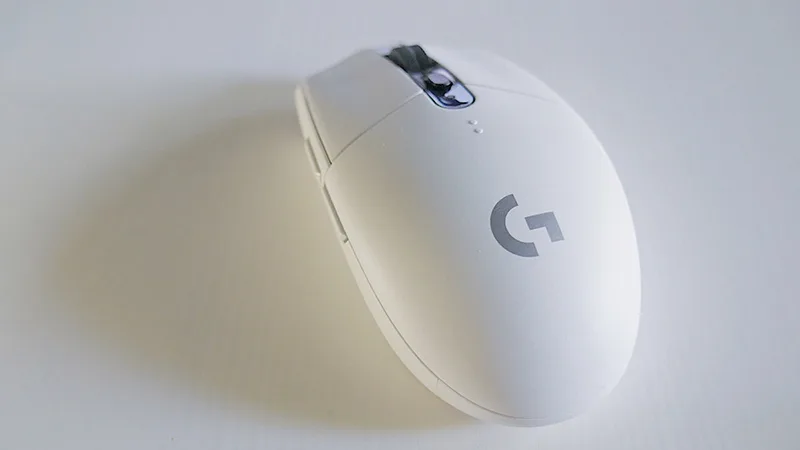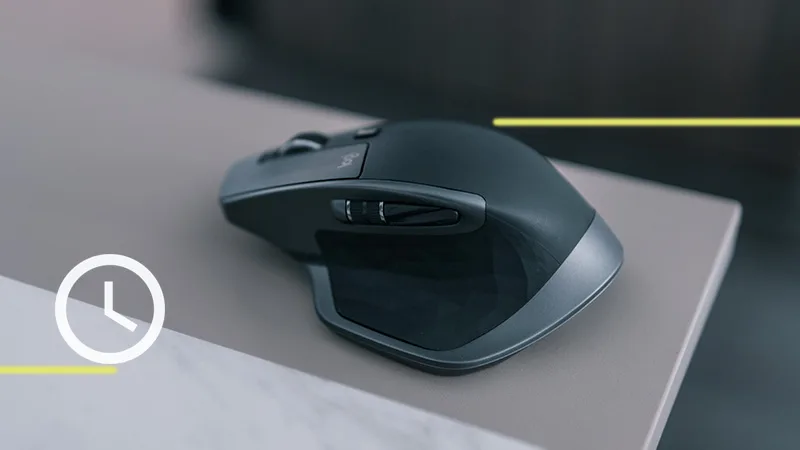You may be noticing that some Pixart sensor starts with PMW and some start with PAW. It is because there is a catch.
PMW stands for PixArt Maximum Performance Wireless and is a type of optical sensor commonly used in wired gaming mice. PAW, on the other hand, stands for PixArt Adaptive Wireless and is a newer technology that offers improved performance with power efficiency and hence is mostly used in wireless mice.
PixArt uses two types of integrated chips i.e., 16-pin and 8-pin. High-end sensors come in a package with 16 pins and are molded with a DIP (dual in-line package) design. While other model uses an 8-pin staggered dual in-line package (DIP).

What is PMW Mouse Sensors?
PMW sensors use a red Infrared LED light to track movement and can have a maximum resolution of up to 26,000 CPI (dots per inch). It has a maximum tracking speed of 400 IPS (inches per second). This high resolution means that PMW sensors are highly accurate and responsive, making them ideal for competitive gaming.
However, PMW sensors can use more power and have a lower lift-off distance (the distance the mouse can be lifted off the surface before it stops tracking) compared to PAW sensors. Unlike PAW (up to 3mm lift-off), you can lift your mouse for no more than ~ 1.2 mm (the thickness of a DVD disc) in order to make it functional.
What is PAW Mouse Sensors?
PAW sensors usually use a white LED or red Infrared LED light and also offer a maximum resolution of up to 26,000 CPI (counts per inch). At the same time, it can go up to 650 IPS of tracking speed which is 250 IPS higher than PMW sensors.
PAW sensors have a more advanced tracking algorithm that compensates for the lower resolution, resulting in smoother and more accurate motion tracking. Additionally, PAW sensors are more power-efficient, have a low-resolution error, and have a higher lift-off distance, making them more suitable for both types of users who prefer a super lower or super high mouse DPI sensitivity.
| PMW Sensors | PAW Sensors |
|---|---|
| Exclusive for wired mice | Works on both wired and wireless mice |
| High power usage | Low power usage |
| Low lift-off distance | High lift-off distance |
| Supports up to 400 IPS tracking speed | Supports up to 400 IPS tracking speed |
| Maximum CPI is 26,000 | Maximum CPI is 26,000 |
PMW vs PAW: Final Verdict
The answer to this question ultimately depends on your personal preferences and use case. If you are a competitive gamer who requires high accuracy and responsiveness, a PMW sensor may be the better choice. However, if you prioritize power efficiency and a high lift-off distance, a PAW sensor may be the way to go.
However, new-generation PAW sensors are way more powerful than PMW sensors and work on both wired and wireless mice due to better tracking speed, efficiency, and better lens (for example, LM19-LSI or L0AE-LSI1).
Before buying any high-end PAW sensor-based wireless mouse, make sure that it has low power usage (< 3 mA) so that it can run longer on a single charge.



